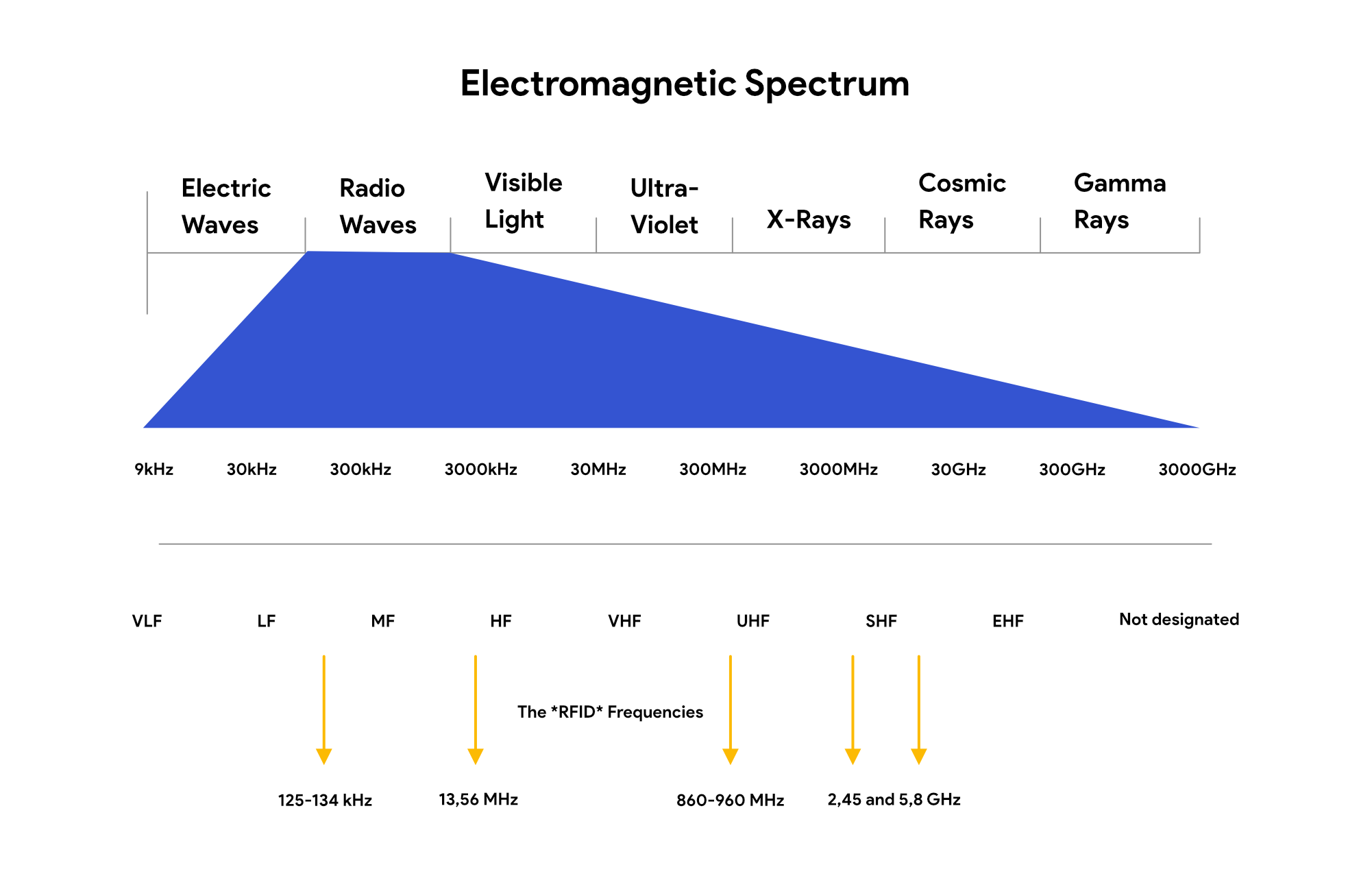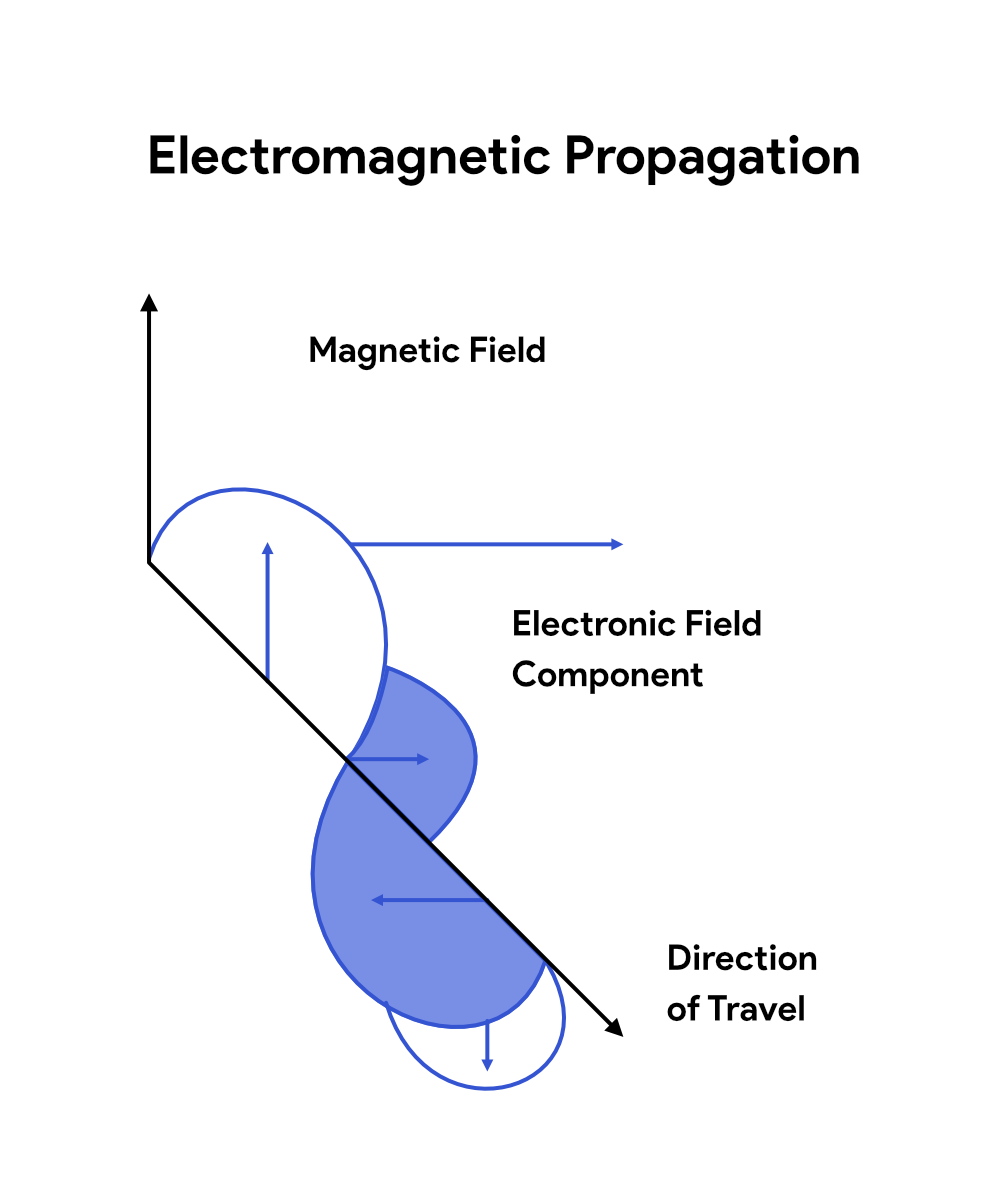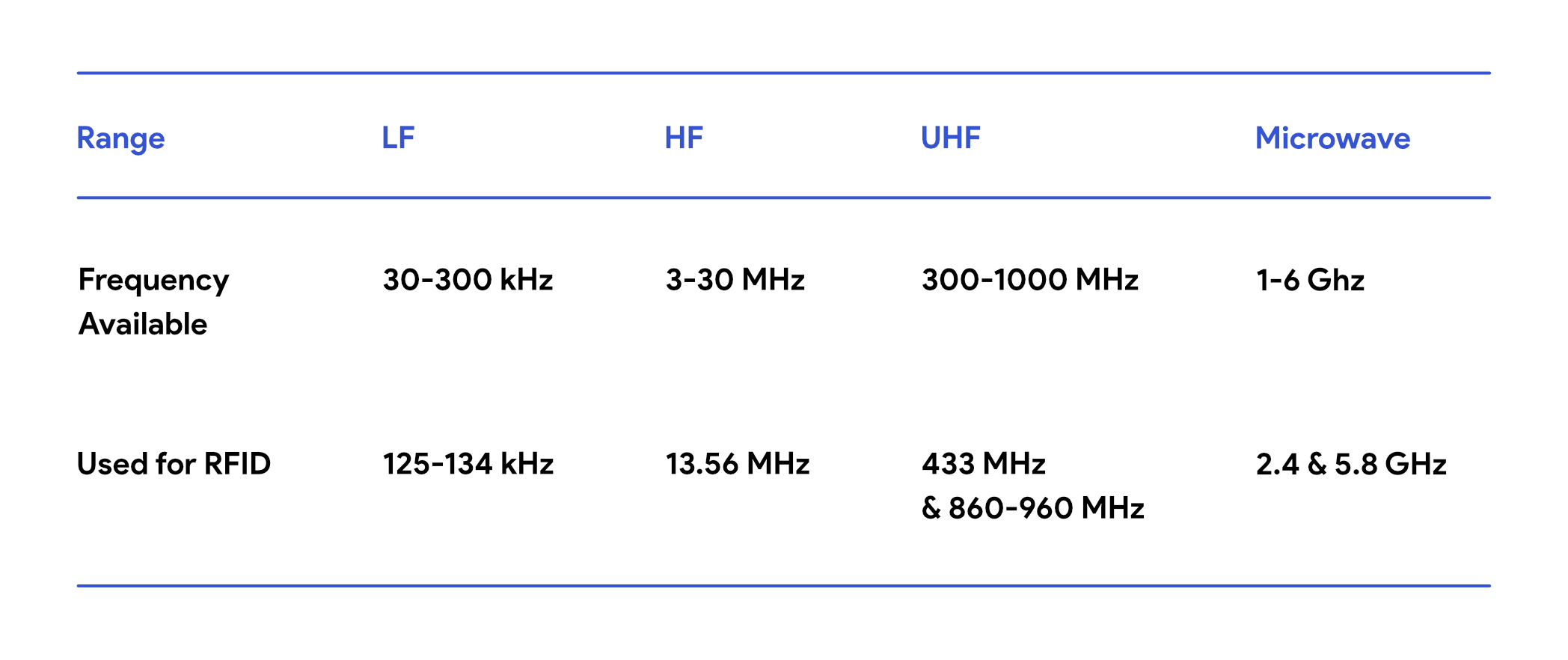Explore / RFID Basics & Resources
RFID Basics - The RF in RFID
RFID systems use radio waves to exchange information between RFID transponders, or tags, and interrogators or readers. How radio waves behave under various conditions in the RFID interrogation zone (IZ) affects the performance of the RFID system. Radio waves propagate from their source and reach the receiver. During their travel, they pass through different materials, encounter interference from their own reflection and from other signals, and may be absorbed or blocked by various objects in their path. The material of the object to which the tag is attached may change the property of the tag. To understand how all these phenomena affect the performance of the RFID system, you need to understand how radio waves are used and propagated.
Electromagnetic Spectrum
Radio frequencies constitute a small portion of a larger electromagnetic spectrum. The entire electromagnetic spectrum includes gamma-rays, X-rays, ultraviolet light, visible light, infrared light, microwaves, and radio waves. The difference between these various parts of the electromagnetic spectrum is their wavelength, or frequency. The energy radiated by radio waves is called electromagnetic radiation.

Electromagnetic Propagation
An electromagnetic wave moves or propagates in a direction that is at right angles to the vibrations of both the electric and magnetic oscillating field vectors, carrying energy from its radiation source to an undetermined final destination. The electric and magnetic fields are mutually perpendicular.

What is a Wave?
A wave is a distortion in a material or medium. While the wave passes through the material or medium, the individual parts of the material cycle back and forth or up and down. All the waves have similar characteristics and follow the same laws and principles. The characteristics of a waveform are wavelength, amplitude, velocity, and frequency. All periodic waveforms have these common characteristics. A Sinusoidal wave is a continuous, uniform wave with a constant frequency and amplitude whose waveform is the same as that of a trigonometric sine function.
The amplitude of a wave is defined as half the distance between the values at positive and negative peaks. Amplitude relates to loudness in sound and brightness in light.
The wavelength of a wave is the distance between a point on one cycle and the identical point on the next cycle, in which points have been selected at the crest of the wave. The typical units of measure of a wavelength are meters or feet. Wavelength is represented by the Greek letter λ (lambda).
The frequency of waves is the number of times the identical points on the wave, crests, or peaks, pass any fixed point during 1 second. Frequency is measured in cycles per second. Cycles per second is called Hertz (Hz) in honor of German scientist Heinrich Rudolf Hertz. One cycle per second is equal to 1 Hz. Frequency is represented by the letter f.
The velocity of the wave is the measure of how fast any point on the wave is moving past a fixed point. Typical units of velocity are meters/second or miles/second. Velocity is represented by a lowercase letter v.
The relationship between velocity, frequency, and wavelength is shown by the following equation:
Velocity (v) = wavelength (λ) × frequency (f) or v = λ × f
Using this equation, you can calculate frequency from wavelength or vice versa.
Radio Waves
RFID technology uses the radio wave portion of the electromagnetic spectrum; therefore, our discussion of electromagnetic spectrum is limited to the radio wave portion of the spectrum, specifically the radio waves in the range of 100 kHz to 5.8 GHz.
Radio signals are affected in many ways by objects in their path and by the media through which they travel. This means that radio signal propagation is of vital importance to anyone designing or operating a radio system. The properties of the path through which the radio signals propagate govern the level and quality of the received signal. Reflection, refraction, and diffraction of the original signal can occur and may add constructively or destructively to the original signal. The resultant signal is a combination of several signals that have traveled by different paths due to reflection, refraction, and diffraction. In addition, the signals traveling via different paths can be delayed and can distort the resultant signal.
Radio signals propagate in many different ways, including free space propagation, ground wave propagation, ionospheric propagation, and tropospheric propagation. These relate to the effects of the media through which the signals propagate. RFID applications occur at very small distances; therefore, free space propagation is the most important type. In free space propagation, the major factor affecting the signal strength is the distance between the transmitter and the receiver. RFID systems need to have their radio propagation models generated for factory, warehouse, office, or urban situations. Under these circumstances, the free space propagation is modified by multiple reflections, refractions, and diffractions. Despite these complications, it is still possible to generate rough guidelines and models for these radio propagation scenarios.
Within the radio spectrum is an enormous range of frequencies. To categorize and manage the different areas of the spectrum, the radio spectrum is split into many different segments, but RFID technology uses only four of these segments.
